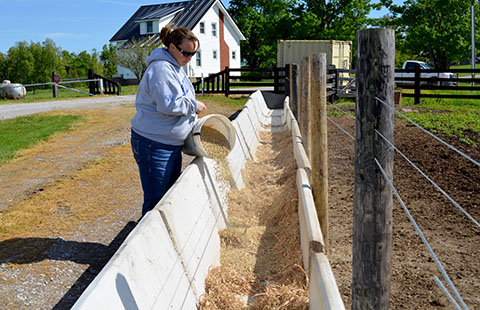UK soybean hull research gives options to Kentucky cattle farmers
UK soybean hull research gives options to Kentucky cattle farmers

Kentucky cattle farmers have reaped the benefits of research conducted over the past 20 years at the University of Kentucky Agriculture, Food and Environment.
That research, conducted by Roy Burris, UK extension beef specialist, showed that producers could safely feed soy hulls to their cattle without losing any feed value. Soy hulls are the seed coats of soybeans and a by-product of soybean meal and soybean oil production.
Burris began his research in 1996 after discovering that all soy hulls were sent overseas. The hulls contained highly digestible fiber for cattle. Burris thought they could work well as a supplement with cattle, especially those already on a high-fiber, pasture-based diet, compared to supplementing their diets with corn, which contains high amounts of starch.
“Our feeding trials showed that soy hulls could replace corn on a pound-per-pound basis, especially with cattle on forage-based diets,” said Burris, who is based at the UK Research and Education Center in Princeton. “This was because we weren’t shifting those rumen bacteria that aid in digestion of fiber to those that digest starches.”
In the feeding trials, the cattle liked and readily consumed the soy hulls without any acidosis or founder.
The results of the research were very popular with Kentucky beef cattle farmers, who readily accepted them.
“It’s a by-product that really became a co-product and added value to the soybean crop,” Burris said.
Kentucky producers now use all of the soy hulls produced by the state’s soybean farmers, which is around 120,000 tons of soy hulls each year. The success of feeding soy hulls has also led to the expansion of feeding other by-products to cattle including corn screenings, wheat screenings, distillers dried grains and cotton seed hulls. It also keeps the cattle from competing with humans for food.
Crops Extension Livestock Research


